Ulan Ude is the capital of the Russian oblast (state) of Buryatia. It was our last stop in Russia before crossing the border into Mongolia and we found it to be a friendly and interesting small city.
Ulan Ude has the somewhat dubious honour of having the world’s largest Lenin head on display in the main square. It is 7.7m tall and weighs a massive 42 tonnes. Our hostel had a collage of comedy photos of the statue which inspired us to try a couple of our own!
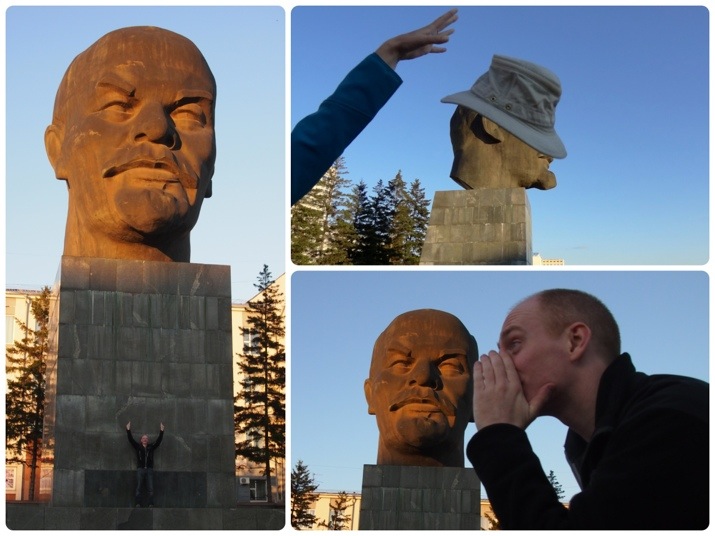 See if you can spot Andrew in the first picture to get an idea of the scale! Also, there’s a caption competition for what he’s whispering to Lenin – post yours in the comments
See if you can spot Andrew in the first picture to get an idea of the scale! Also, there’s a caption competition for what he’s whispering to Lenin – post yours in the comments
Food
We treated ourselves to a pub lunch on our first day in the city. We had to contend with a menu written only in Russian, but by this stage we knew enough words to work out what each section was (soups, salads, main courses, grill…) and so we took pot luck. Andrew chose from the main courses something that we thought was chicken, and contained a word that was something like ‘Mexican’, and I chose a random soup (chanakhi). Andrew’s was indeed a kind of Mexican chicken (well done us!) and mine was a fabulous, very savoury broth with huge chunks of meat (mutton or lamb I think).
The local specialty of Buryatia is a dish called ‘Buuza‘. We tried these twice, the second time they were delicious homemade ones at Nadya’s birthday party – we even got the recipe: mix beef and pork mince, diced onion and a little bit of water, form into balls roughly 3cm in diameter, wrap in a simple dough of flour and water, pinching up the edges to seal them. They are cooked by steaming, and should be eaten by hand using the dough to catch the juices.
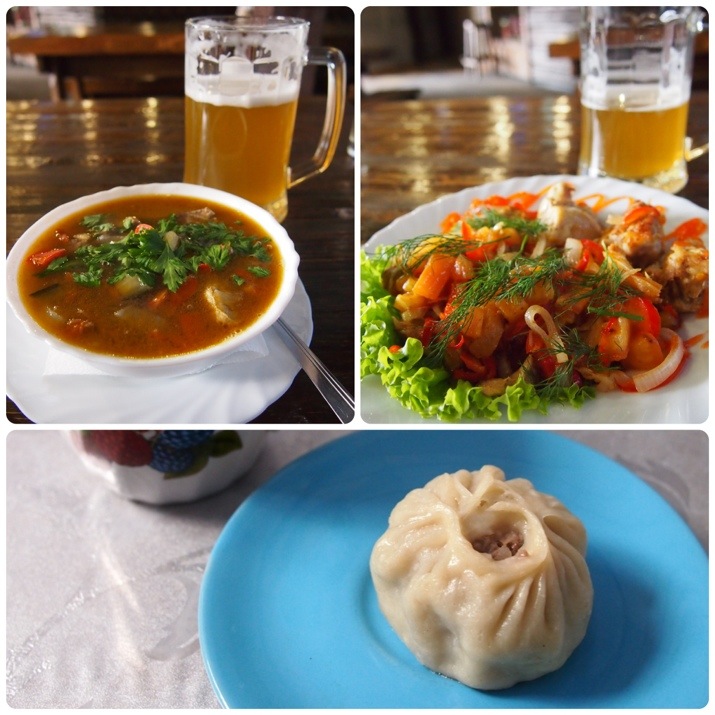 Soup and Mexican chicken at the Bochka pub, a single Buuz
Soup and Mexican chicken at the Bochka pub, a single Buuz
Buryat History Museum
On our first afternoon we had a wander around the town and then visited the Buryat History Museum. The local people (Buryats) are mainly Buddhist and the top floor of the museum was a display of devotional paintings (thangkas), statues, and costumes used in Buddhist mystery plays, which had been collected during the closing of the monasteries after the Revolution. It was especially interesting to read the description of the meaning behind some of the images as we’re likely to be visiting quite a few Buddhist sites over the coming months in Mongolia, China and beyond! The rest of the museum was devoted to the history of the region from ancient times, through Genghis Khan and the Mongol empire, to the nomadic cultures and railway building in modern times.
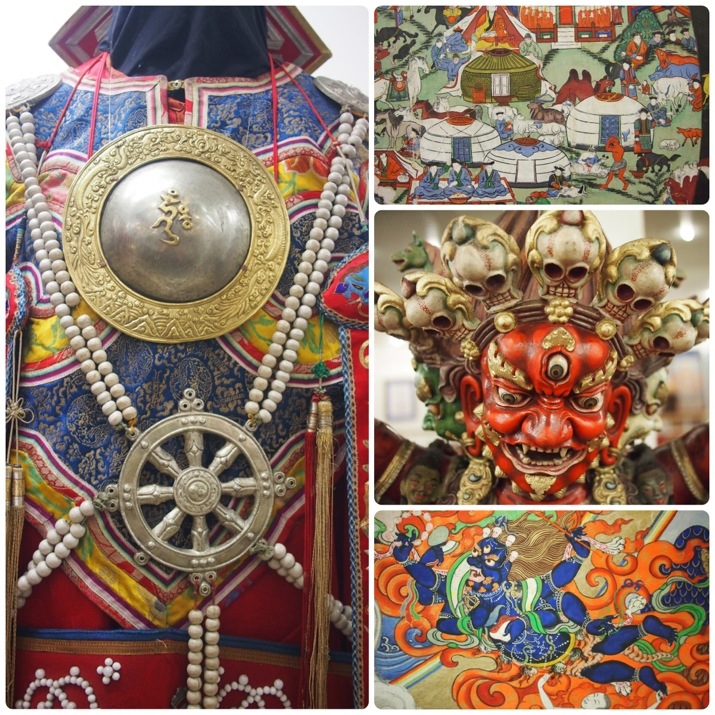 Buddhist artefacts at the Buryat History Museum
Buddhist artefacts at the Buryat History Museum
 A copy of the ‘Ostrog bible’, the first complete publication of the bible in the Church Slavonic language printed in 1580
A copy of the ‘Ostrog bible’, the first complete publication of the bible in the Church Slavonic language printed in 1580
Ivolginsky Datsan
Having learnt a little bit about Buddhism at the History Museum, the next day we set off on the 1 hour bus journey to the Datsan, or Buddhist monastery, at Ivolginsky. As instructed by our guidebook, we followed the path clockwise around the site, turning the prayer wheels as we went – the big ones took quite a bit of effort! The temples themselves were beautiful, very colourful and different to anything else that we’ve seen in Russia.
The Datsan is also home to the body of the 12th Khambo Lama who ‘died’ in 1927. He stipulated that he should be buried in the lotus position and exhumed after 30 years. When he was dug up in 1955 the monks found his body to be miraculously preserved. In 2002 he was exhumed again and still found to be looking as if he’d only recently died. The body is now kept in the monastery, but we didn’t see it as it is only brought out a few times a year. The faithful believe that he didn’t actually die but reached the state of nirvana while he was meditating, so it is just that his spirit has left his body behind.
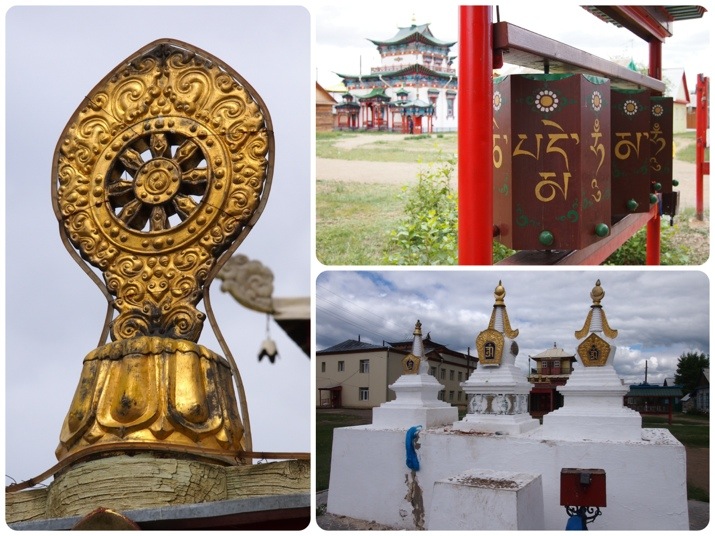 Ivolginsky Datsan (clockwise from left): Temple roof decoration, prayer wheels and temple, stupas
Ivolginsky Datsan (clockwise from left): Temple roof decoration, prayer wheels and temple, stupas
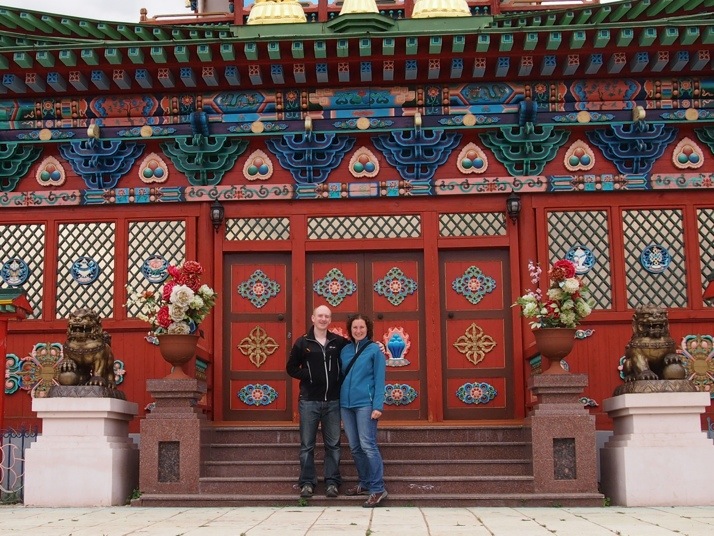 Us outside the colourful main temple
Us outside the colourful main temple
Ethnographic Museum
In Ulan Ude, we spent yet another day at an open air ethnographic museum (see also Riga and Suzdal). But this one was a little bit different as it contained examples of wigwams (called chooms in Siberia) and gers as well as wooden houses and churches similar to those in the other museums. It also has a rather sad zoo section of Siberian wildlife. The animals seemed to be well fed and their enclosures kept clean, but it was heart wrenching to watch the majestic Siberian tigers and brown bears pacing up and down in their small cages.
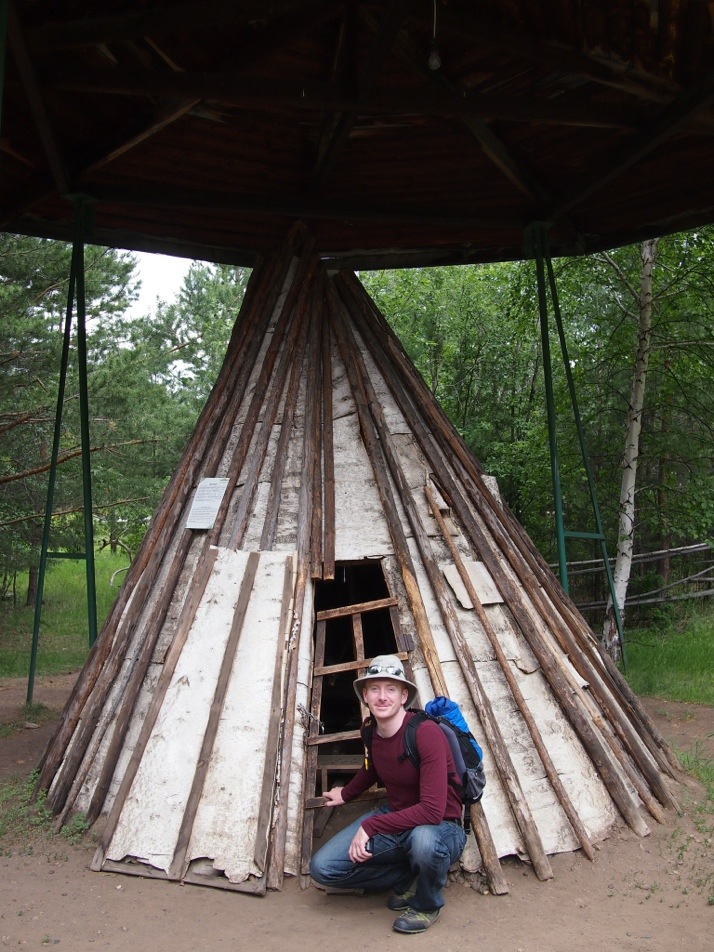 Andrew with a birch bark choom – bark was used as a covering in the summer and reindeer furs in the winter
Andrew with a birch bark choom – bark was used as a covering in the summer and reindeer furs in the winter
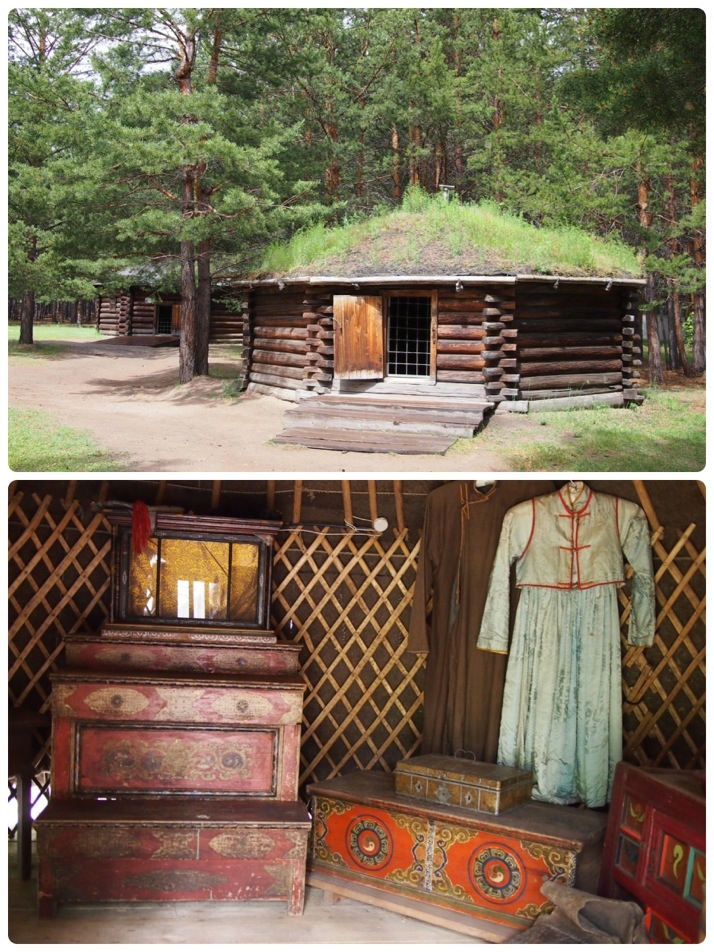 A wooden ger (I’m not sure that the green roof is strictly traditional…), reconstruction of the inside of a felt ger
A wooden ger (I’m not sure that the green roof is strictly traditional…), reconstruction of the inside of a felt ger

 two year trip
two year trip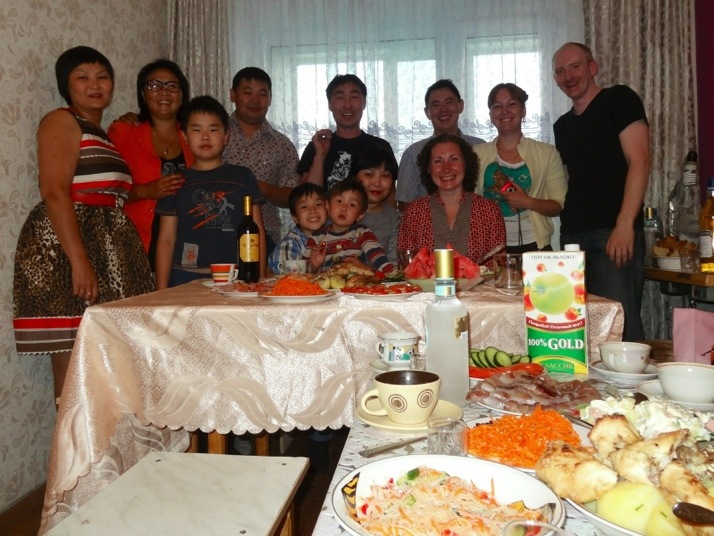
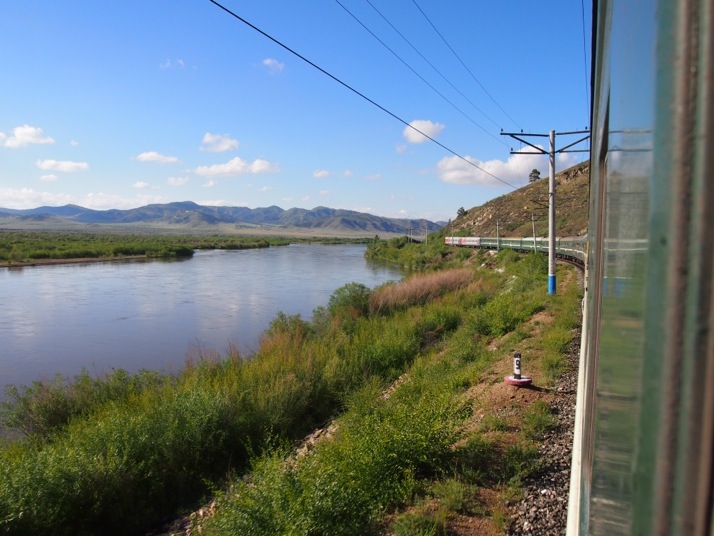
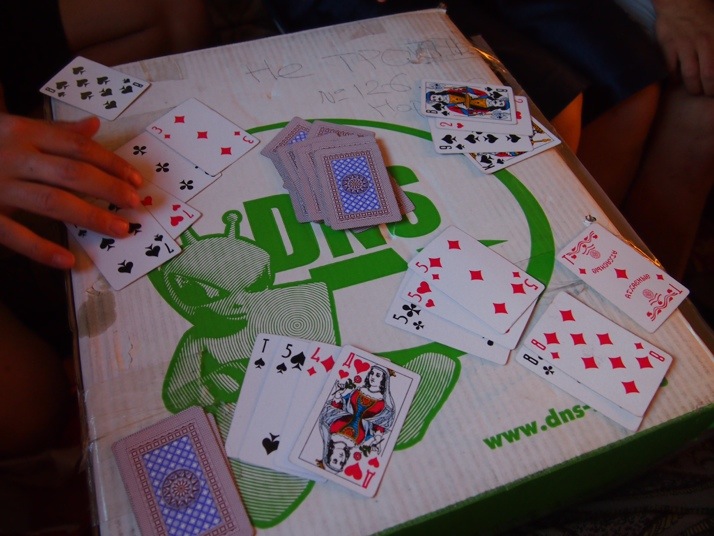
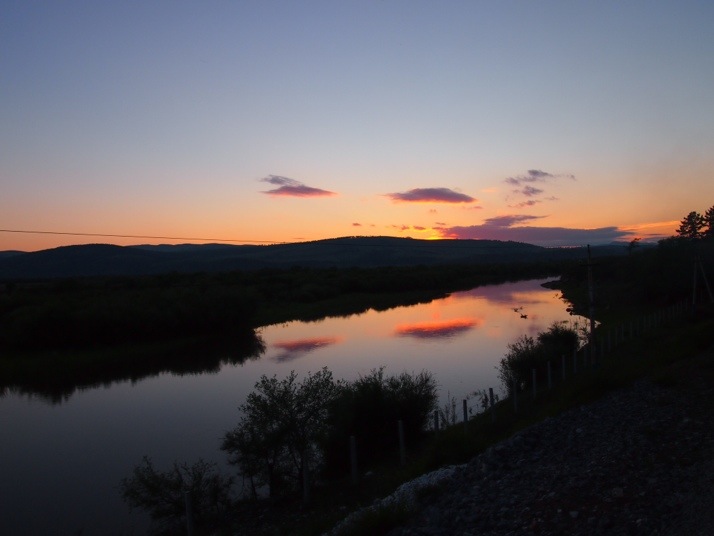
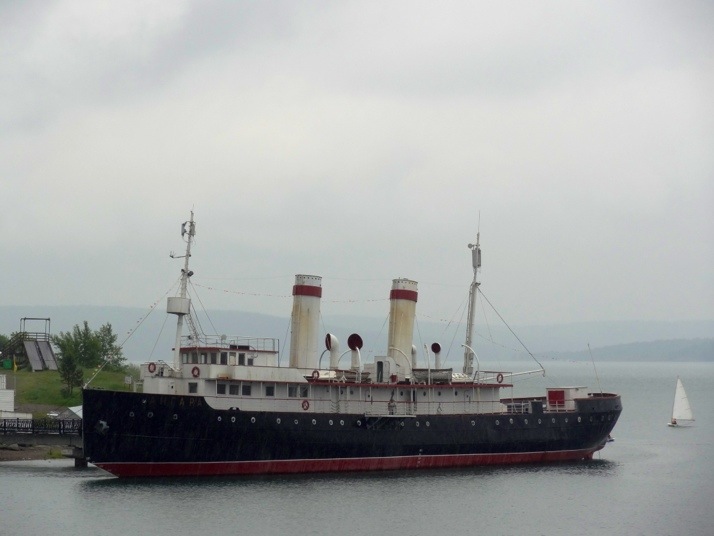 The Angara. As viewed in the rain
The Angara. As viewed in the rain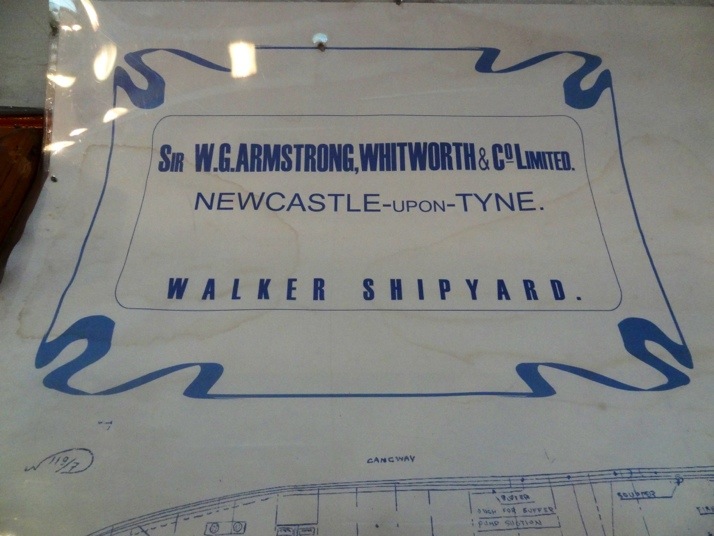 Wey-aye man, bilt on the toon! We wa geet prood!
Wey-aye man, bilt on the toon! We wa geet prood!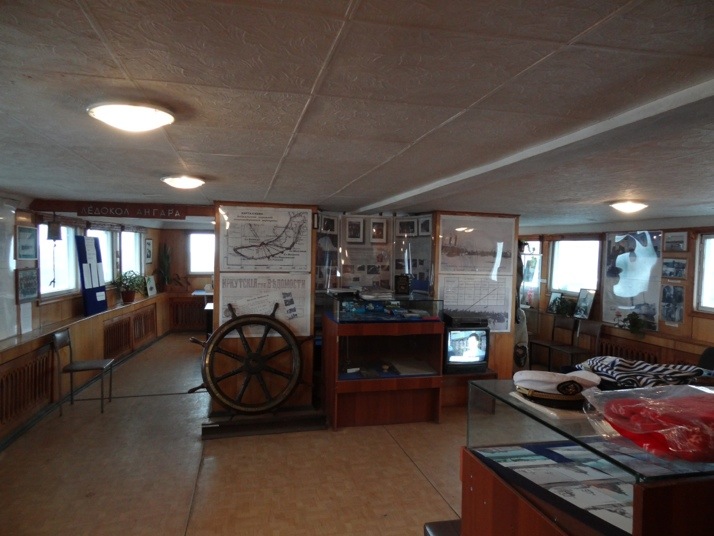 The single-room exhibition on the steam-ship Angara
The single-room exhibition on the steam-ship Angara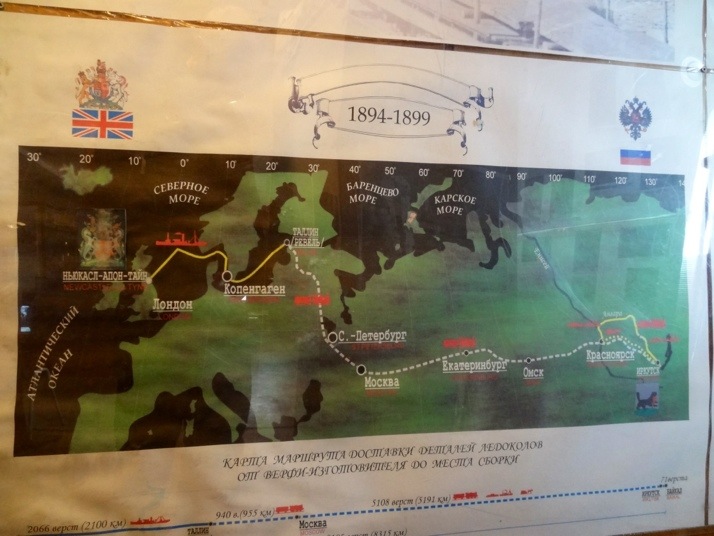 The route of the hulls from Newcastle to Listvyanka, accompanied by 5 ship-workers from Newcastle, where the ships were assembled. Everything arrived, but there were delays.
The route of the hulls from Newcastle to Listvyanka, accompanied by 5 ship-workers from Newcastle, where the ships were assembled. Everything arrived, but there were delays.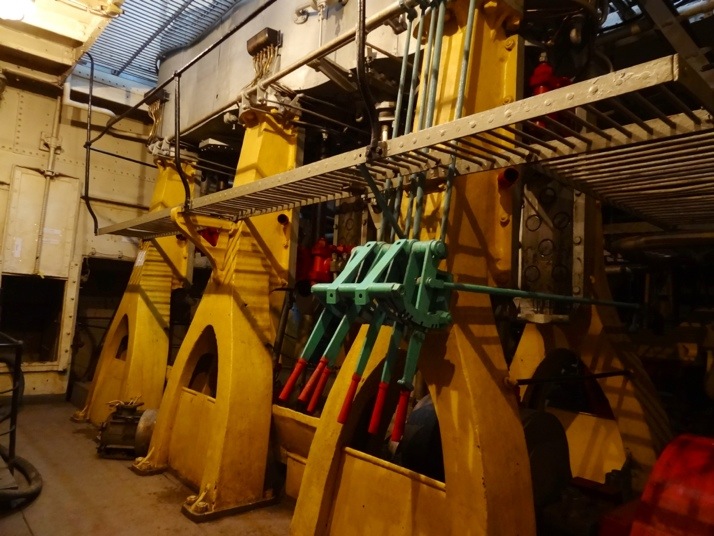 The “small” forward engine, used to drive a bow-screw that displaced the water underneath the ice, making it easier to break
The “small” forward engine, used to drive a bow-screw that displaced the water underneath the ice, making it easier to break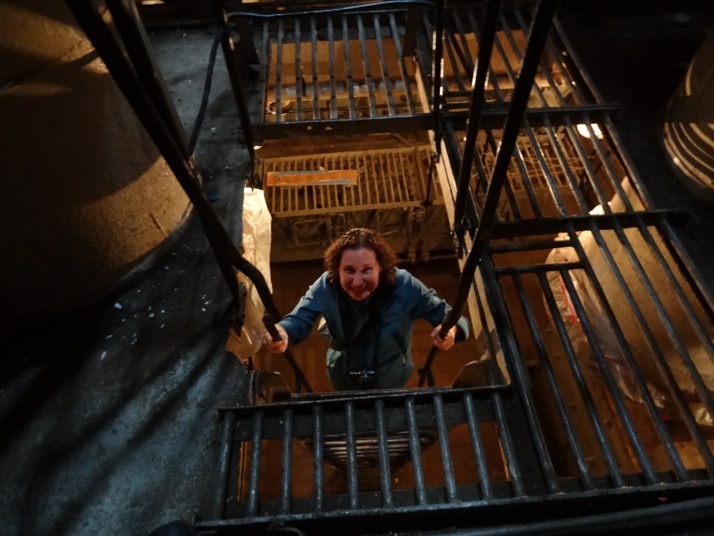 Julie climbing through the various maintenance levels between the two huge main boilers
Julie climbing through the various maintenance levels between the two huge main boilers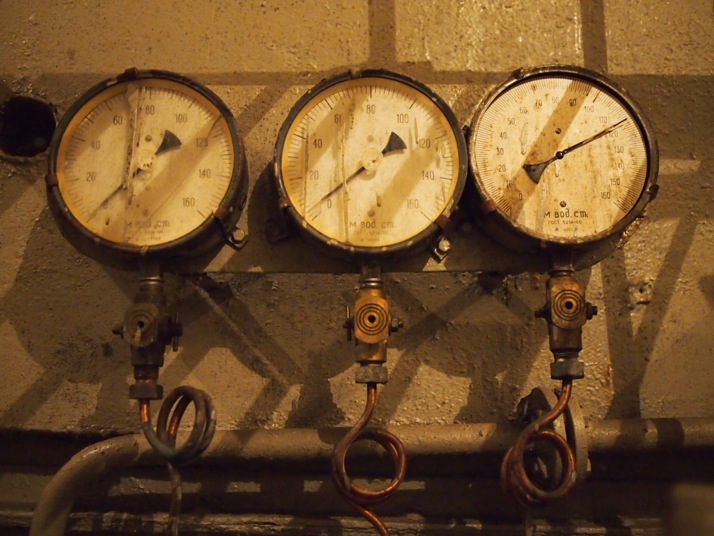 Dials, knobs and levers aplenty
Dials, knobs and levers aplenty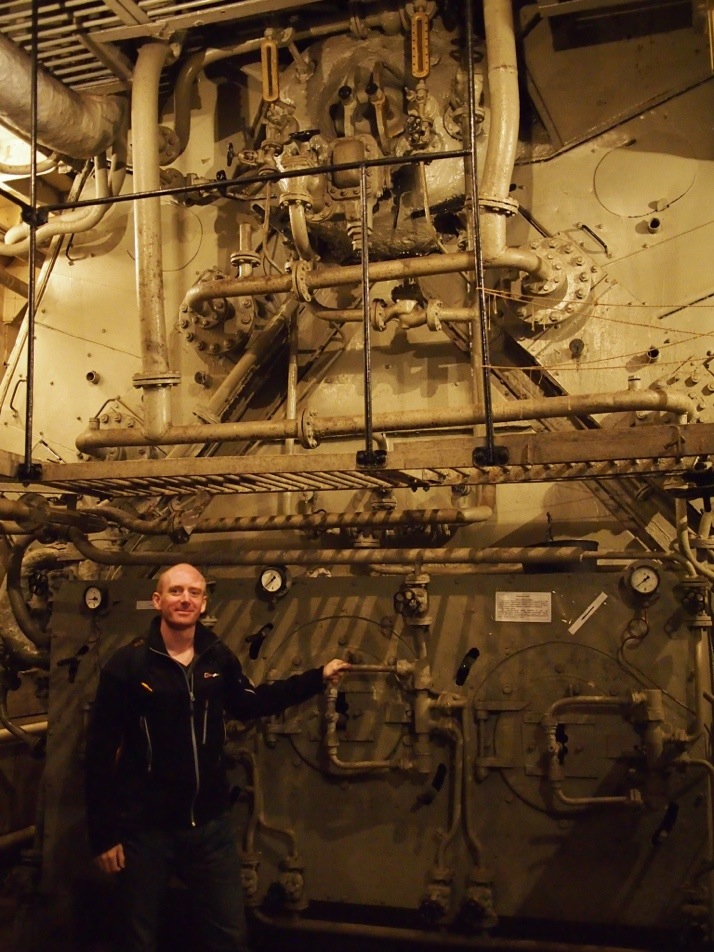 Me posing next to one of the two huge boilers
Me posing next to one of the two huge boilers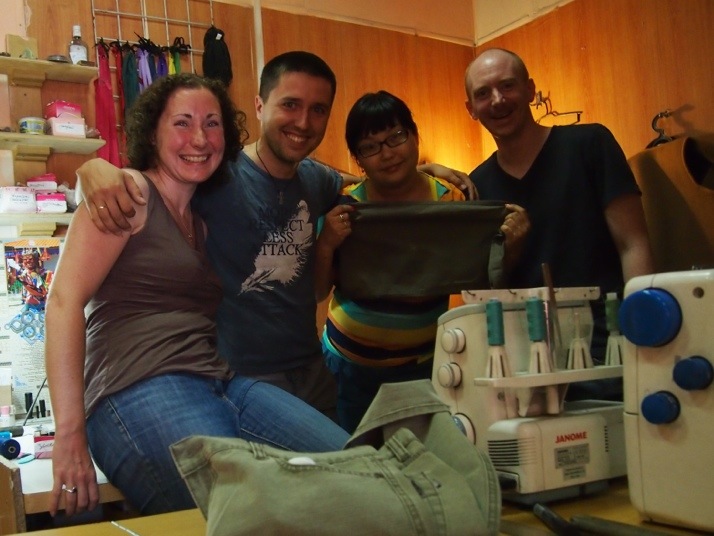
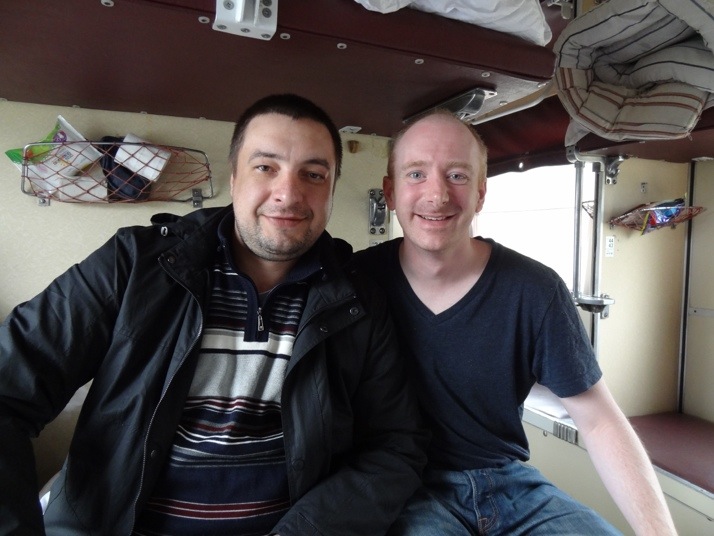
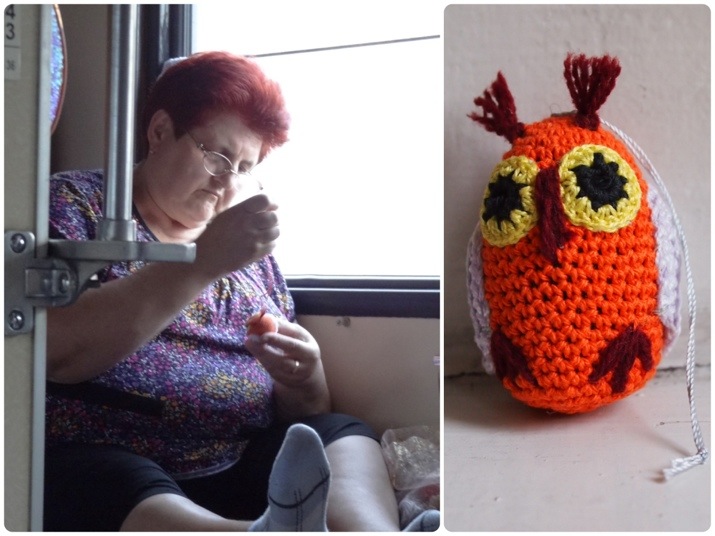
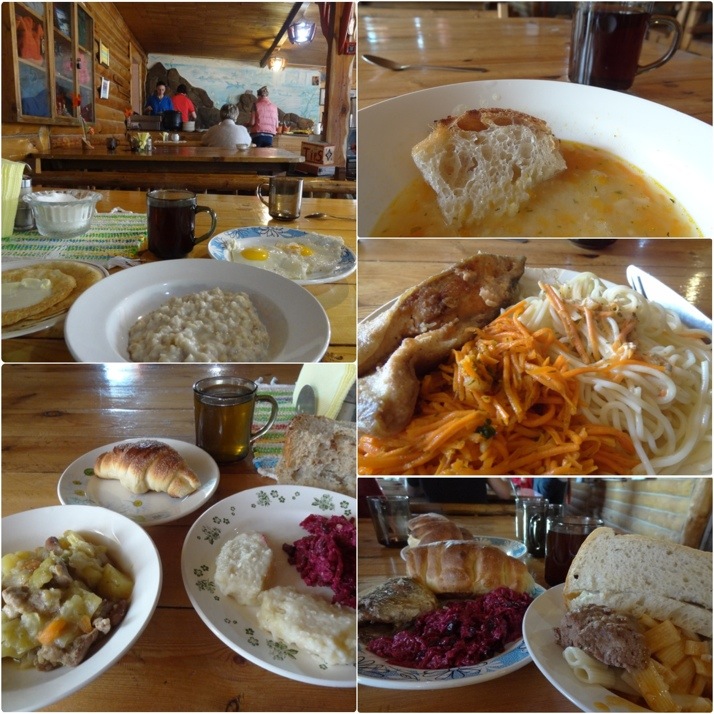 The food at Nikita’s. Clockwise: Breakfast of pancakes, porridge, fried eggs and tea; Lunch of two courses, soup or salad with grilled or fried fish (and this time with spaghetti), and tea; Dinner of beetroot and carrot salad with fish, pasta with giant meatball and lots more tea
The food at Nikita’s. Clockwise: Breakfast of pancakes, porridge, fried eggs and tea; Lunch of two courses, soup or salad with grilled or fried fish (and this time with spaghetti), and tea; Dinner of beetroot and carrot salad with fish, pasta with giant meatball and lots more tea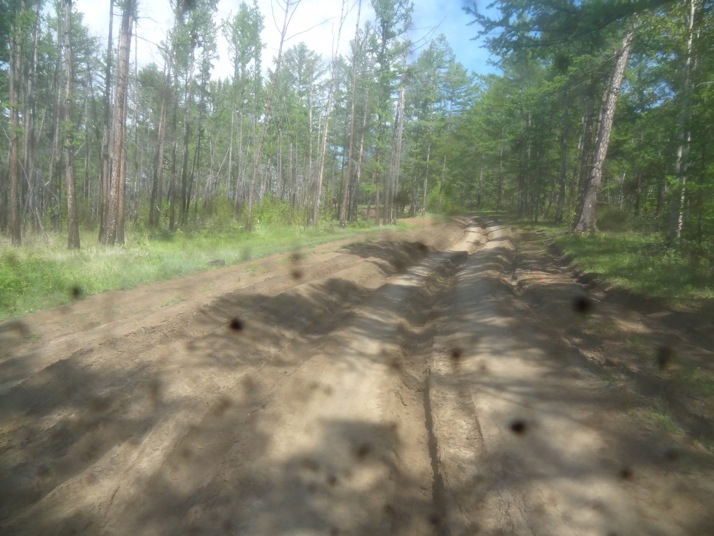 Roads? Where we’re going, we don’t need roads
Roads? Where we’re going, we don’t need roads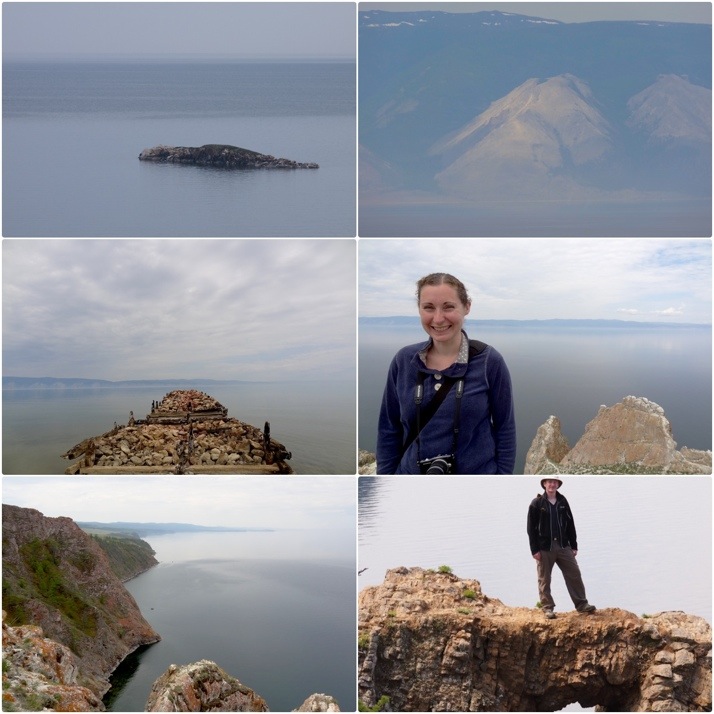 Western coastline of Olkhon. Clockwise: “Crocodile Rock”, The “Face of the Island” on the opposite shore, Old jetty outside a now dismantled gulag fish processing factory, Julie and “The 3 Brothers”, the view south from “The Three Brothers”, and Andrew testing his nerves on a natural window in the rock
Western coastline of Olkhon. Clockwise: “Crocodile Rock”, The “Face of the Island” on the opposite shore, Old jetty outside a now dismantled gulag fish processing factory, Julie and “The 3 Brothers”, the view south from “The Three Brothers”, and Andrew testing his nerves on a natural window in the rock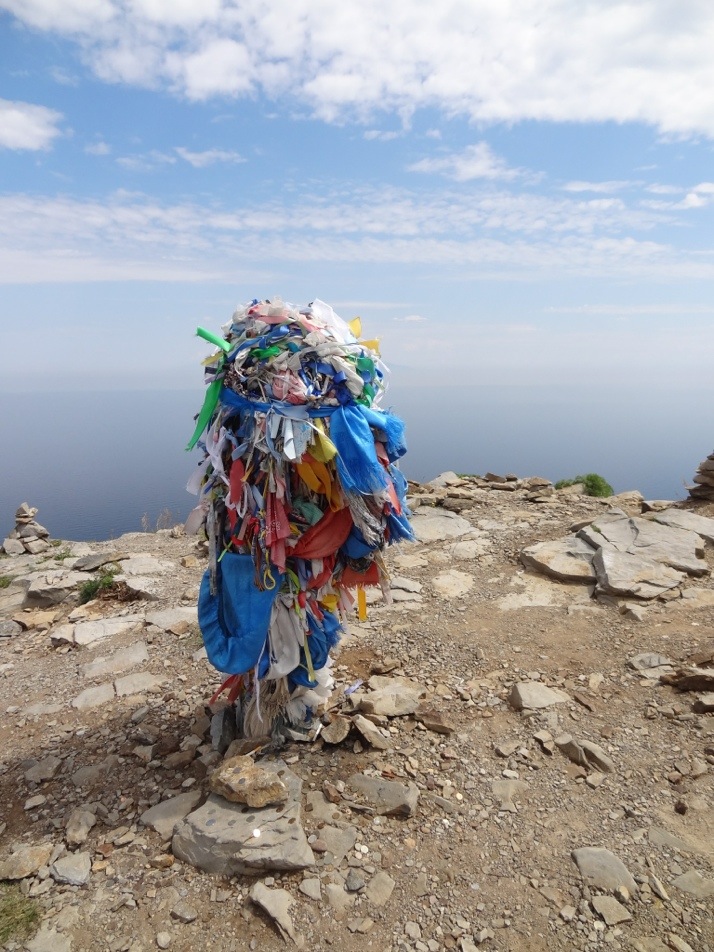 Shamanism prayer ribbons at Khoboy Peninsular – the northern-most tip of Olkhon Island, Lake Baikal, Siberia.
Shamanism prayer ribbons at Khoboy Peninsular – the northern-most tip of Olkhon Island, Lake Baikal, Siberia.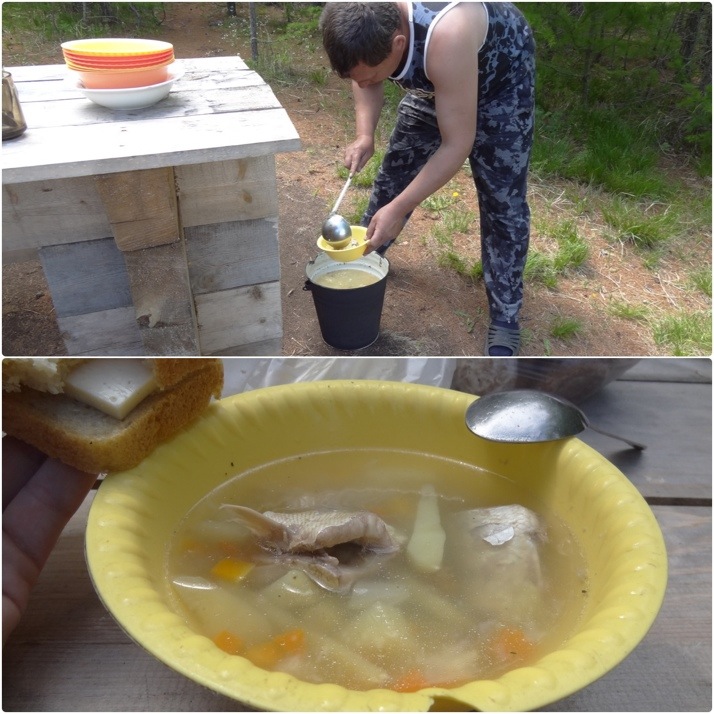 Olkhon delicacy, “Ukha” (fish soup), server up with cheese sarnies, tea, and lots of sweet biscuits
Olkhon delicacy, “Ukha” (fish soup), server up with cheese sarnies, tea, and lots of sweet biscuits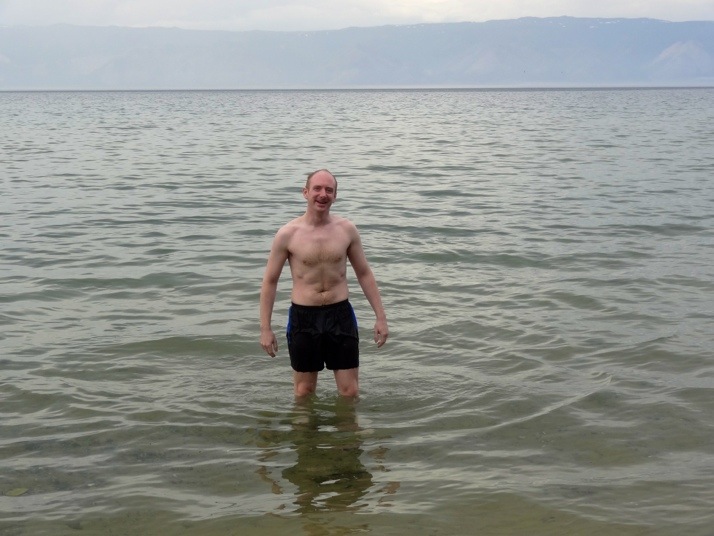 Braving the cold water of Lake Baikal in June – I don’t know why I’m smiling, I can’t feel my feet anymore..
Braving the cold water of Lake Baikal in June – I don’t know why I’m smiling, I can’t feel my feet anymore..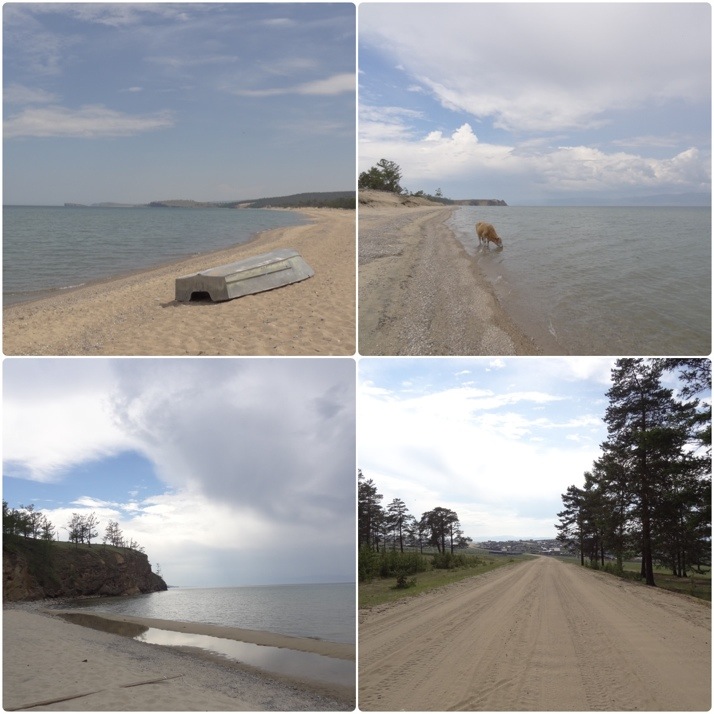 Clockwise: One of the many sandy/pebbly beaches on the western shoreline, cows stopping for a drink in the lake, the beach we took a dip from, view through the forest on the way home
Clockwise: One of the many sandy/pebbly beaches on the western shoreline, cows stopping for a drink in the lake, the beach we took a dip from, view through the forest on the way home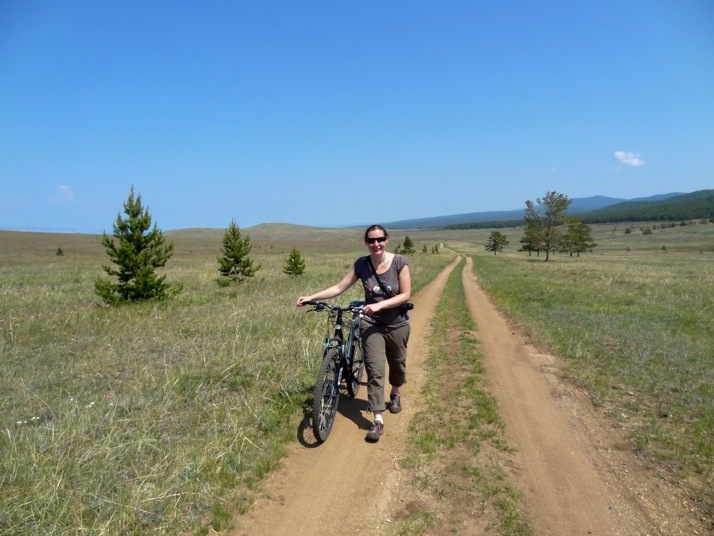 Even in the lowest gear, some parts were tough going. In the end we both resorted to getting off and pushing.
Even in the lowest gear, some parts were tough going. In the end we both resorted to getting off and pushing.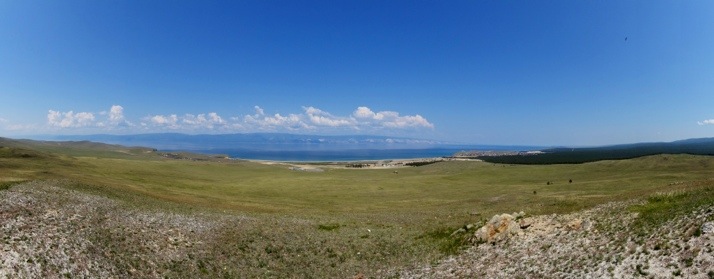 Panorama of Khuzir, Olkhon island, Lake Baikal, Siberia
Panorama of Khuzir, Olkhon island, Lake Baikal, Siberia